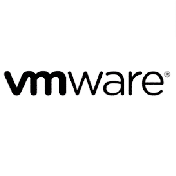Seminarinhalt
After a review of IBM MQ, the course explains the similarities and differences between administration of a cluster and administration of a distributed message IBM MQ environment. You learn cluster specific commands and procedures, and explore the role of a cluster in a highly available IBM MQ infrastructure. You learn how to do a detailed verification of a new cluster configuration, review and identify all resulting components, and troubleshoot problems.
You also learn about cluster administration, workload balancing, security, and use of publish/subscribe clusters. You learn how to recognize when a problem is due to connection authentication, channel authentication, or object authorizations. You also learn about design options such as overlapping clusters and use of clusters with z/OS queue sharing groups. Many of the considerations in this course are based on actual engagement experiences.
Objective
- Describe the basic IBM MQ components
- Identify which IBM MQ objects are used to impact routing in a cluster environment
- Identify who in your organization can impact the health of a cluster and the need for adequate communication
- Describe the correct role of a cluster in a highly available IBM MQ infrastructure
- Describe the differences and similarities between administering clustered and non-clustered IBM MQ environments
- Describe how to configure, verify, and troubleshoot an IBM MQ cluster
- Identify the various channels that are present in a cluster environment and how each is created
- Describe how to use separate transmission queues in a clustered queue manager
- Explain how to remove a queue manager from a cluster on a permanent or temporary basis
- Explain IBM MQ connection authentication
- Explain IBM MQ channel authentication
- Describe IBM MQ object authorizations
- Explain how to troubleshoot security challenges in a cluster
- List ways to influence workload balancing in a cluster
- Describe the history and basic components of IBM MQ publish/subscribe
- Explain the considerations and details of implementing publish/subscribe in an IBM MQ clustered environment
- Describe cluster design architectural considerations
- Summarize the benefits of design and configuration simplicity in a cluster implementation
- Explain how to configure overlapping clusters
Programm
- Course introduction
- IBM MQ baseline
- Exercise: Configuring and reviewing base IBM MQ resources
- Before you start
- Understanding and implementing an IBM MQ cluster
- Exercise: Implementing and verifying a cluster, cluster queues, and a cluster gateway
- Cluster administration tasks and commands
- Exercise: Working with cluster administration tasks
- IBM MQ security and clusters
- Exercise: Working with IBM MQ security
- Influencing workload balancing behavior
- Exercise: Working with workload balancing options
- Publish/subscribe and clusters
- Exercise: Configuring a publish/subscribe cluster
- Cluster design considerations
- Exercise: Configuring an overlapping cluster
- Course summary
Zielgruppen
- This course is designed for IBM MQ administrators, architects, application developers, and other professionals who need to understand the design considerations, architectural role, and implementation of IBM MQ clusters
Vorkenntnisse
- IBM MQ V9 System Administration (using Windows for labs) (WM153G)
- IBM MQ V9 System Administration (using Linux for labs) (WM154G)
- IBM MQ V8 System Administration for z/OS (WM302G)
- You should also have working knowledge of the Windows operating system to run the lab exercises.




